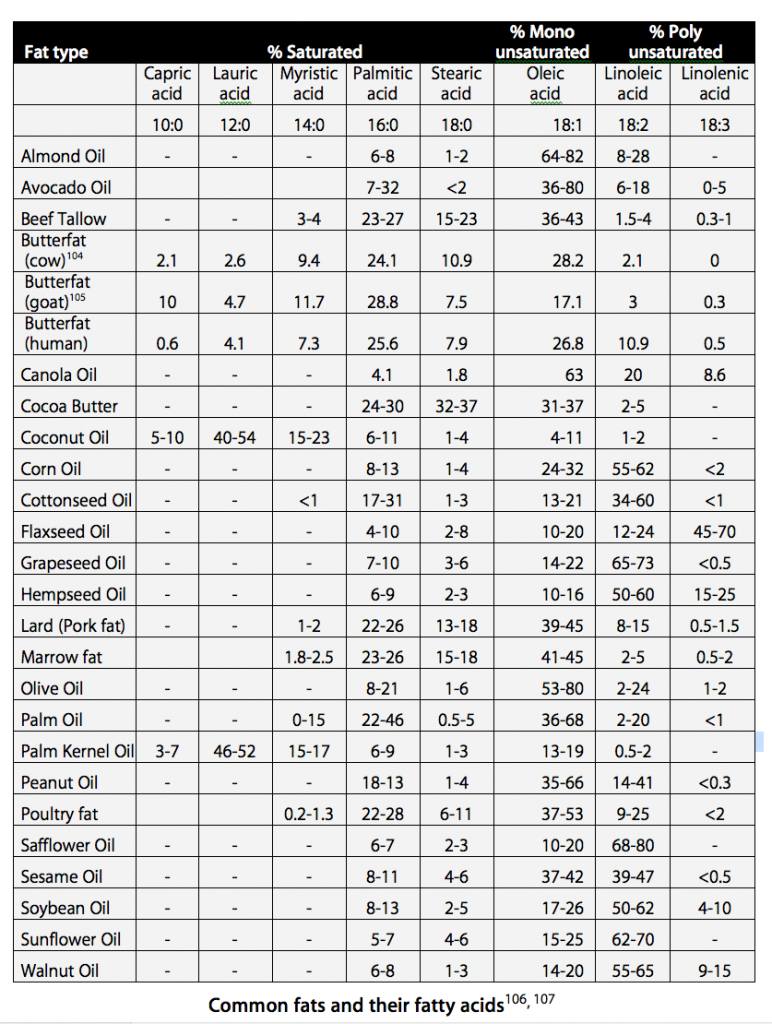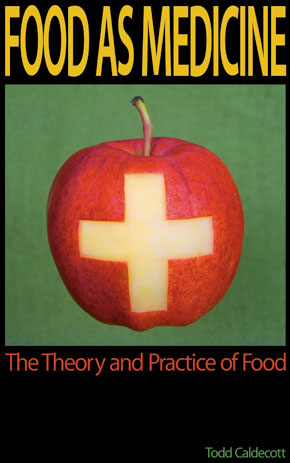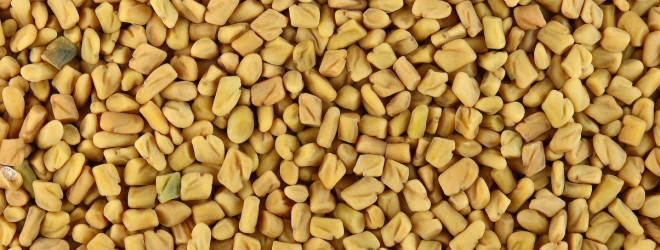
Fenugreek for blood sugar
A little while ago, I received this note from a colleague in India:
“I happened to read about your new book Food as Medicine. In this regard I have some information to share with you. While I was in hospital it was observed that I had mild diabetes, with normal fasting blood sugar and slightly high post-prandial glucose. For 4 months I was taking one tablet of Glimulin® (glimepiride) a day. Thereafter, I stopped it and started taking one teaspoonful of fenugreek powder suspended in one glass of water twice day. My blood glucose is now totally under control. From a search in the internet I found that several papers have reported the anti-diabetic effect of fenugreek. It is harmless and very inexpensive. I trust this letter finds you and family in the best of health.”
Fenugreek is a herb I have been using to control blood sugar in metabolic syndrome and diabetes for a number of years now, often in combination with other herbs for diabetes, including Gurmar (Gymnema sylvestre), Turmeric (Curcuma longa), Ginseng (Panax spp.), Devil’s Club (Oplopanax horridus), Guduchi (Tinospora cordifolia), and Triphala. Taken on its own, however, fenugreek still has a lot of benefit, and is both cheap and easily-available. In my book, Food As Medicine, I have a brief monograph on fenugreek:
“Fenugreek seed, herb (methi): bitter and sweet, warm in quality. Reduces vata and kapha. Used to stimulate the appetite and raise the natural fire of the body, making it useful for digestive problems including constipation, colic, parasites and hemorrhoids. Also used to dispel fatigue, strengthen the heart, and balance blood sugar. One small handful of the fresh leaf can be added as a garnish near the end of cooking. Use ½ – 1 tsp of the seed in stews.”
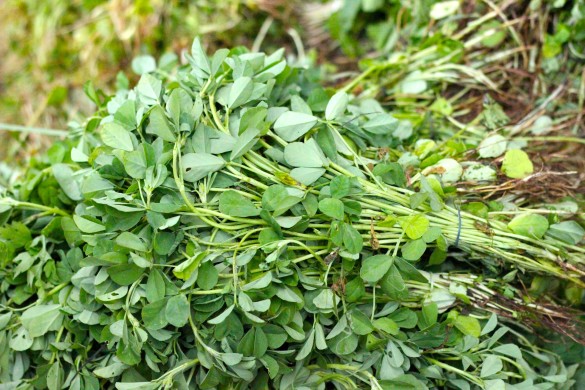
I frequently add fenugreek to my food, but this reader points out, it can also be used as a medicine. As a digestive aid fenugreek is useful not just because it can boost the digestive fire, but because it has a mucilaginous property it can help to lubricate the intestines and bowel. It may seem surprising that fenugreek has mucilage considering just how hard the seeds are, so to get the best effect make sure to grind the seed into a powder and infuse it in hot water. While fenugreek also adds nutrients and flavor to meals, preparing it as a hot infusion is better than mixing it with food to control blood sugar. The active ingredient in fenugreek that helps to control blood sugar is a soluble fiber called galactomannan, but more recent research suggest other molecular mechanisms for its hypoglycemic property, which are almost as potent as insulin. Fenugreek also exhibits antiinflammatory properties, supporting its traditional indication as a blood cleanser, making it useful for diseases such as arthritis and skin problems. For medicinal purposes, 1-2 teaspoons of fenugreek can be ground into a powder, and infused in a half a cup of hot water. When cool, drink the liquid and the powdered fenugreek together.
In Hindi the name for fenugreek is methi, referring to the use of both the seeds as well as the leaves. The seeds provide for a characteristically bitter-sweet taste that is reminiscent of maple syrup. This smell is due to the presence of an aromatic lactone called sotoloneone, which is extracted from fenugreek seed and used as a flavoring for artificial maple syrup. In fact, if you eat a lot of fenugreek, you may even begin to detect a maple syrup body odor, as your body excretes the solotone in your sweat. The leaves can also have this effect, but to a lesser degree. I have never noticed an issue myself, although apparently some people are more sensitive. I particularly love fresh methi leaves, which can be added to soups and stews just like you would cilantro. In Food As Medicine, I provide a recipe for methi tepla, which is a sourdough flatbread (roti) made with fresh methi leaves:
Ingredients
1 cup flour, germinated (p. 134) and roasted (p. 139)
1 cup sourdough culture (p. 145)
half cup fresh chopped methi (fenugreek)
2 tbsp. sesame or olive oil
1 tbsp. sesame seeds
1 tsp. ajwain seeds
1 tsp. turmeric powder
½ tsp. cracked black pepper
1 tsp. salt
olive oil
Directions
Grind the flour to the desired consistency using a coffee grinder or a grain mill. Mix the flour and sourdough culture together, adding in a little water as required, and knead well. Place in a bowl and drizzle a little olive oil over the surface of the dough to keep it moist. Cover with a wet cloth, let sit for several hours in a warm place, and let it ferment (2-18 hours – longer is better). After fermentation, knead the dough again, mix in fresh methi, sesame seeds, ajwain, turmeric, black pepper and salt. When mixed, break off pieces of the dough about the size of a golf ball, roll into a ball and put aside. Warm a large cast iron pan to medium heat with no oil. Sprinkle some flour onto a large flat surface such as a cutting board or a counter, and roll out each ball until it is a round, thin disc, and immediately place in the pan. Cook for approximately 1-2 minutes on each side. When golden brown, take the roti out of the pan and then place them on a hot burner very briefly until they puff up. Serves 3-4 people.
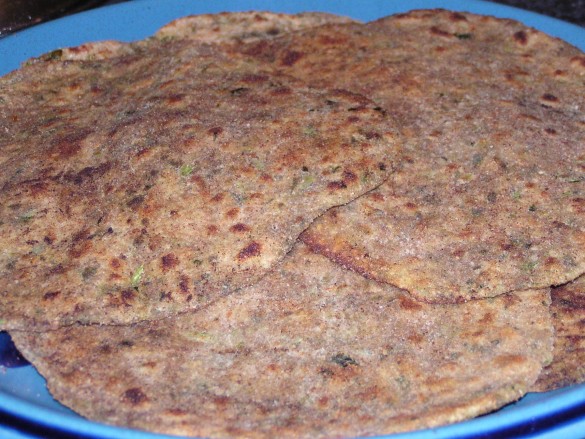
A couple of years ago, I was chatting with my friend, colleague, and co-herbalist Thomas Avery Garran about the use of fenugreek in Chinese medicine. Some Chinese sources state that fenugreek is used to boost yang energy in the body, and I was curious to see if it was used in actual practice. According to Thomas, it is used for this purpose, but it is often neglected. For an inexpensive and common herb, fenugreek perhaps seems a little out of place with expensive and exotic yang tonics such as ginseng, eucommia and deer antler. When viewed from the perspective of Ayurveda, however, in which fenugreek is used to boost metabolism, as well as reduce dryness (vata) and cold (kapha), it definitely supports its use as a yang tonic in Chinese medicine.
Lastly, I would be remiss if I didn’t mention just how useful fenugreek is as a milk-promoter (galactagogue) for new moms, possibly helping by boosting prolactin levels. In India, fenugreek often comprises a number of different home remedies for this purpose, usually combined with herbs such as fennel and ajwain. There is also some suggestion that fenugreek may enhance breast size. Like many other members in the legume family, such as red clover and soy beans, fenugreek contains phytoestrogens that mimic the effects of estrogen. As breast growth is in part dependent upon estrogen, this weak estrogenic effect combined with its galactagogue properties, fenugreek may indeed act to enhance breast size. But I wouldn’t recommend taking in large amounts for this purpose, as the hormonal effects will likely resemble premenstrual symptoms, characterized by swollen, sensitive breasts. Taken in judicious amounts by new moms, however, I would not anticipate any problems.
What is your experience with fenugreek?
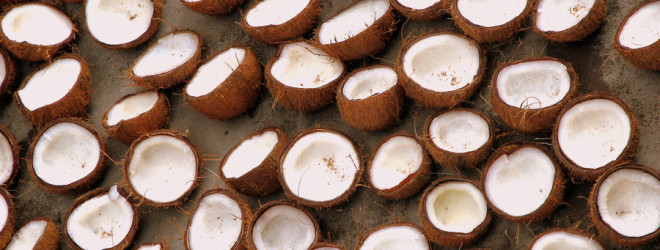
Fats and oils
While sweet foods like fruit most surely delight the senses, it is fair to say that what the body really craves is fat. Perhaps the reason is that compared to proteins and carbohydrates fats are a more abundant source of energy. With our comparatively huge brains, 60% of which are made entirely from fat, our evolution as a species can be defined by our drive to acquire this nutrient. Imagine if you were sitting around a campfire 200,000 years ago with an empty belly – what food would most satisfy your hunger? Sure, fruits and vegetables have their appeal, but if you don’t want to spend all day chewing vegetation, what food fills your stomach best, and then gives you energy to do other stuff? Beyond any other food, fat was prized by traditional peoples all over the world, and as the rendered essence of an animal or a plant, was a kind of valuable currency that could be stored and traded for other goods. In Ayurveda, fat is the most nourishing of foods, and in Hinduism is equated with the goddess Lakshmi, the bringer of wealth, beauty and abundance. Everyday in India millions of people massage their bodies with oil to keep them youthful and healthy. Fat protects, comforts and soothes. Fat is like money in the bank.
Despite the traditional auspiciousness of fat there is perhaps no better example of a group of foods that have been so clearly targeted and maligned. Beginning in North America in the early 1900’s, and then soon after in Europe and now spreading all over the world, industry and government have been trying to wean people away from their traditional high fat diets. Armed with an apparent avalanche of research reported on by the media, consumers have been led to believe that fat is killing them, regardless of the fact that the prevalence of our most common illnesses such as cardiovascular disease, cancer and diabetes have been steadily increasing since this marketing campaign began.
Even though this low fat marketing blitz that has permeated our fast-food culture for several decades now, the evidence for the benefits of eating a high fat diet is slowly being accumulated by scientific research. The difficulty thus far in validating the benefits of dietary fat is partly because research models continue to lump all dietary fat into the same category. For example, both French fries and herring oil are rich in fat, but clearly one will make you very sick if you eat it regularly, while the other is something humans been thriving on for tens of thousands of years. Often the claim is that the problem is saturated fat and cholesterol, and yet traditional peoples have survived for millennia on such fats. In China the traditional cooking fat has always been lard, and when researchers began studying this population, the Chinese people had lower rates of diseases such as diabetes when compared to Western countries. Flash-forward to modern times and now much of the Chinese population are using refined cooking oils – and sure enough – their disease rates such as diabetes are starting to match the West. If saturated fat and cholesterol were ever truly harmful to humans, we would have died off long ago.
Also known as lipids, fats refer to a diverse range of chemicals including triglycerides, cholesterol, phospholipids, steroids, carotenoids, vitamins (A, D, E, K) and locally-acting hormones called eicosanoids. Like carbohydrates, lipids are comprised of carbon, oxygen and hydrogen, but the amount of oxygen in a lipid is much less, making for fewer polar covalent bonds. This means that lipids are insoluble in polar solvents such as water, but soluble in non-polar solvents like alcohol. This makes fats quite different from proteins and carbohydrates, and is the reason why lipids such as cholesterol must be bound to proteins such as LDL or HDL, in order to be transported in the blood.
When we speak of dietary fat we are referring exclusively to triglycerides, comprised of a three-carbon glycerol molecule that forms the backbone, and three (tri) fatty acids attached to each carbon in the glycerol molecule. The fatty acids are comprised of a chain of carbon atoms that have a variable size and shape, with hydrogen atoms attached on the side and at the end. When hydrogen atoms fill up every spot available on the carbon chain it is called a saturated fatty acid (a). When two adjacent carbon atoms form a double bond in the chain it is called monounsaturated fatty acid (b), i.e. ‘mono’ referring to the single double bond, and ‘unsaturated’ referring to the fact that the fatty acid isn’t completely ‘saturated’ with hydrogen. A third type of fatty acid is called polyunsaturated (c), meaning that there are two or more (i.e. ‘poly’) double bonds on the fatty acid chain. The following diagram illustrates these differences: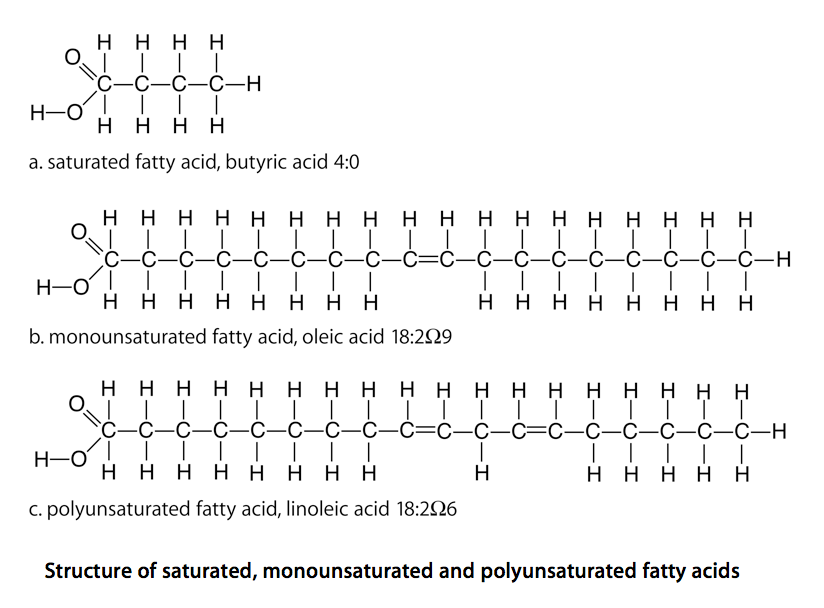
A given triglyceride may be comprised of different types of fatty acids, and so rarely is a fat completely saturated or unsaturated. The following chart lists common dietary fats and oils, and the different types of fatty acids each contains:
Saturated fats tend to be solid at room temperature and are commonly found in animal fats such as lard and butter, but are also present in plant oils such as coconut and palm kernel. Saturated fats are relatively stable and are thus a better choice for cooking and especially frying (p. 121). In comparison, dietary fats rich in monounsaturated fatty acids are more unstable, but certainly more stable than oils rich in polyunsaturated fatty acids, which oxidize quickly when exposed to heat, oxygen or light. One of the key issues that relates to fats is their role in the production of compounds called eicosanoids, including prostaglandins, leukotrienes, prostacyclins and thromboxanes. Eicosanoids are derived from linoleic and linolenic acid, two types of polyunsaturated fatty acids that the body cannot synthesize, and hence are called essential fatty acids. Linoleic acid is an 18-carbon fatty acid also called the omega 6 fatty acid because the first double bond is six carbons from the end, whereas linolenic acid is an 18-carbon fatty acid called an the omega 3 fatty acid because the first double bond is three carbons from the end. Linoleic acid and its active metabolite arachidonic acid (AA) are converted into a series of eicosanoids that tend to have a pro-inflammatory effect, whereas linolenic acid and its metabolites including eicosapentaenoic acid (EPA) and docosahexaenoic acid (DHA) tend to have an anti-inflammatory effect. During our human evolution the consumption of omega 3 and 6 fatty acids was about equal, but with our relatively recent dependence upon cereal grains and vegetable oils in our diet and in animal feed, the ratio of essential fatty acids we consume has become skewed in favor of omega 6 fatty acids. The net result of this imbalance is that we have a tendency to produce more pro-inflammatory eicosanoids, a feature that has been linked to chronic diseases including allergies, asthma, arthritis, cardiovascular disease and cancer.[1] Although our daily requirement for both omega 3 and 6 fatty acids is rather small, given that the average person consumes upwards of 17 times the amount of omega 6 relative to omega 3,[2] many practitioners recommend omega 3 fatty acid supplementation as a counter-measure. There are issues with this recommendation however (see discussion under fish oil, below), and a more sustainable measure is to eat a diet that is naturally rich in omega 3 fatty acids, emphasizing pasture-raised animal produce, wild meat and fish, leafy greens, sea vegetables, and seeds such as chia and hemp seed.
Apart from the fats naturally found in the foods we eat, the fats we cook with must be extracted from their original source whether from animals or plants. The fat in milk called butterfat is extracted by first skimming off the cream, churning it into butter (p. 176), and then rendering off the pure butterfat from the milk solids to make ghee (p. 194). Animal fats including tallow, lard or fish fat are generally extracted by heat, such as boiling or roasting, and in industrial operations undergo further processing and refinement. Animal fats from poultry (schmaltz), beef (tallow), or pork (lard) can be rendered by carefully trimming the meat from the fat, and then slowly roasting the fat over an even heat (see p. 195).
The simplest method to extract an oil from a plant is the expeller press, which applies a mechanical pressure to express the oil. This low-tech method is used for many of the traditional vegetable oils we eat, from sources that have a high percentage of fat and are thus relatively easy to express, including olive (30% fat), sesame (50% fat), palm kernel (50% fat), almond (50-65% fat) and coconut (65% fat). The expeller process generally has a minimal impact on the quality of the oil, but under very high pressures temperatures can reach upwards of 120˚F/49˚C, high enough to cause some oils such as flax seed to oxidize.[3] In some cases the nut or seed is boiled or roasted before expression to render the oils more conducive to extraction, or in more recent times, non-polar synthetic solvents such as hexane are used. Such intensive techniques allow processors to express oil from sources such as grape seed (6% fat), corn (12% fat) and soy (20% fat) that are otherwise very difficult to express with an expeller press, and were never part of the traditional diet. Several of these newly introduced oils are sourced as by-products from other industries, such as grape seed from the wine industry, or cottonseed oil from the cotton industry.
While the expeller press typically yields a high quality product, when intensive methods of extraction are used the purity, quality and taste of an oil can be dramatically affected. As a result these oils require further processing, which may include degumming, neutralization, winterization, bleaching, deodorization (steam distillation) and hydrogenation. Some of these processes utilize chemicals and solvents to remove natural constituents such as waxes, gums, free fatty acids, vitamins and sterols. During deodorization in particular, the oil is heated to temperatures as high 446-500˚F (230-260˚C) for as long as several hours. Hydrogenation is a last step in which the oil is heated in a chamber with a metal catalyst and exposed to pressurized hydrogen gas. This is done to saturate oils rich in polyunsaturated fatty acids with hydrogen, turning it into a kind of saturated fat that allows it to be solid and shelf-stable at room temperature.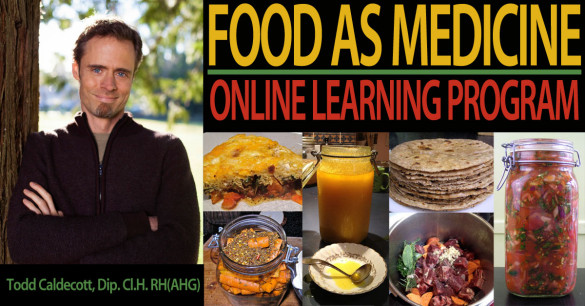 Hydrogenation is a process that fundamentally changes the physical structure of an unsaturated fatty acid, flipping hydrogen atoms across the double bond between two carbon atoms, changing them from cis (‘same side’) to trans (‘across’) configuration. Transfats have come under a lot of fire lately based on research that hydrogenated oils are associated with a higher risk of cardiovascular disease, diabetes and cancer. But ‘transfats’ are not the issue per se. In fact some transfats play a useful role in human health, like vaccenic acid and conjugated linoleic acid (CLA), both of which are naturally occurring in butterfat. More recently, researchers have linked trans-palmetoic acid, found in whole fat dairy products and meat, with a significant reduction in the risk of atherosclerosis and diabetes.[4] The label of ‘transfat’ obscures the real issue, which is the way industrial processing dramatically alters the structure of the fats we eat, removing essential fatty acids, vitamins and antioxidants, leading to nutrient deficiencies and gross imbalances in the ratio of fatty acids in the diet. Significant damage also occurs when oils rich in polyunsaturated fatty acids are heated during processing, altering their intrinsic structure as well as generating disease-causing lipid peroxides.[5], [6]
Hydrogenation is a process that fundamentally changes the physical structure of an unsaturated fatty acid, flipping hydrogen atoms across the double bond between two carbon atoms, changing them from cis (‘same side’) to trans (‘across’) configuration. Transfats have come under a lot of fire lately based on research that hydrogenated oils are associated with a higher risk of cardiovascular disease, diabetes and cancer. But ‘transfats’ are not the issue per se. In fact some transfats play a useful role in human health, like vaccenic acid and conjugated linoleic acid (CLA), both of which are naturally occurring in butterfat. More recently, researchers have linked trans-palmetoic acid, found in whole fat dairy products and meat, with a significant reduction in the risk of atherosclerosis and diabetes.[4] The label of ‘transfat’ obscures the real issue, which is the way industrial processing dramatically alters the structure of the fats we eat, removing essential fatty acids, vitamins and antioxidants, leading to nutrient deficiencies and gross imbalances in the ratio of fatty acids in the diet. Significant damage also occurs when oils rich in polyunsaturated fatty acids are heated during processing, altering their intrinsic structure as well as generating disease-causing lipid peroxides.[5], [6]
The following is a list of the best fats and oils for cooking, and the upper limit for cooking temperatures:
- organic butter: low-medium heat: 300°F/150°C
- extra virgin sesame oil: low-medium heat, 350°F/175°C
- extra virgin coconut oil (not copra): low-medium heat, 350°F/175°C
- organic lard or tallow: medium heat: 370°F/188°C
- extra virgin olive oil: medium heat, 405°F/210°C
- extra virgin almond oil: medium heat, 420°F/216°C
- organic palm and palm kernel oil: medium heat, 455°F/235°C
- organic (grass-fed) ghee: high heat: 485°F/252°C
Note that I have not included many of the cold-pressed vegetable oils commonly touted as being a valuable source of essential fatty acids, including canola, walnut, pumpkin, hemp, flax, sunflower, safflower or perilla oil. Nor do I include essential fatty acid supplements such as borage, evening primrose and black currant oil on this list. While many of them such as walnut, flax and hemp seed are rich in fat, none were ever used as food oils since shortly after pressing they rapidly begin to oxidize, causing adjacent fatty acids to link together and polymerize. This makes them effective ‘drying oils,’ traditionally used in paints and varnishes to seal and preserve wood – but not as food. Apart from the damage that occurs to these oils during processing and storage, cooking these oils has also been shown to generate health-damaging lipid peroxides[7] (see p. 121, in Food As Medicine).
To lengthen shelf life and preserve the quality of cooking oils, store them under cool, dry conditions. Even if a fat is naturally high in saturated fatty acids, factors such as humidity, heat, light and oxygen will all promote rancidity. Generally speaking, no fat or oil should be used for high-heat cooking.
Different types of fats have different properties, and traditional cultures have provided us with a detailed framework of what they are and how to use them. Fatty foods are typically reserved for people suffering from a vital deficiency, displaying signs such as weight loss, depressed immunity and weakness. Fatty foods are particularly useful for nourishing the brain during both gestation and childhood, to restore women after pregnancy, and in older people who show signs of wasting. In his excellent book on diabetes management, Dr. Richard Bernstein suggests that increasing the intake of fat upwards of 40% of the total caloric intake can be very helpful to stabilize blood sugars and insulin levels in diabetics.[8] In Ayurveda, fatty foods are typically avoided in the obese, in people with weak digestion, or in the presence of excess mucus, congestion or fever. Fatty foods (but not essential fatty acids) are also avoided in active multiple sclerosis (urusthambha), a disease in which the immune system attacks the fatty tissues of the nervous system.
Among the fats described by Ayurveda ghee is perhaps the most celebrated. Prepared from cultured butter, ghee has a sweet taste and is cool, heavy and wet in quality. Balancing to both vata and pitta, ghee is considered to be a rasayana, helping to enhance and maintain vitality. Internally ghee is used to treat exhaustion, nervous system disorders and diseases of the liver. Topically ghee is anti-inflammatory and finds special utility in diseases of the eyes and skin, especially when prepared with bitter-tasting herbs such as barberry (Berberis spp.) and the Ayurvedic herbal formula triphala. Like honey, ghee is yogavahi, meaning that it contains the ability to augment the effects of any medicinal agent it is combined with. It is often combined with honey for its nutritive effects, but never in equal quantities. Although generally good for digestion, ghee can block the channels of the body and promote congestion if there is a lot of ama (toxicity).
Sesame oil (taila, gingelly oil) is another highly recommended food oil, and is the primary medium for the many different types of medicated oils used in Ayurveda. Sesame oil has a sweet flavor, and is warm, heavy and wet in quality, used to balance vata, enhance strength, nourish sexual function and clear the complexion. Applied topically sesame nourishes the skin and nervous system, helping to balance vata in the muscles and joints. Coconut oil is a fat frequently used in the south of India. It has a sweet flavor and a cool, wet and heavy quality, making it suitable to balance both pitta and vata. It is applied to reduce heat and inflammation, and to nourish and protect the skin. Most coconut oil comes from roasting the dried fruit (copra), which damages the integrity of the oil. Extra virgin coconut is preferred, either pressed from the dried fruit mechanically, or skimmed and purified from the fermented fruit. Olive oil and almond oil are both sweet in flavor, have a warm, heavy and wet quality, and are excellent to balance vata. Animal oils, including lard and tallow, are sweet in flavor and warm, heavy and wet in quality, and are useful for balancing vata. When used topically as medicated oils and salves, animal fats are much better absorbed, and are better carriers for medicinal herbs than vegetable oils. Among the different oils marrow fat is the most nourishing and balancing to vata; extracted from bones by boiling in water, cooling, skimming off the fat, and then reheating at low temperatures to remove any remaining water.
Fish oils, derived from fatty fish including herring, menhaden and ooligan (smelts), were exceptionally important foods utilized by many traditional peoples all over the world. They were typically produced by fermenting the freshly caught fish for up to two weeks, and then rendering off the oil by simmering at low heat in water. Rich in fat-soluble vitamins including vitamins A, D, E and K as well as omega 3 fatty acids, these rendered oils were not only an important dietary supplement, they were a valuable commodity for all coastal peoples, and were traded with interior peoples for other goods such as animal pelts and dried meat. In North America these ‘grease trails’ were extensive trading routes that extended deep into the interior, well beyond the Rocky Mountains, from Alaska all the way south to northern California. Recent scientific interest in the health benefits of fish oils has spawned a relatively new industry, and these oils are now found in the marketplace as a ubiquitous health food supplement. To meet consumer demand however, this type of fish oil is a highly refined product, and has undergone extensive processing to remove the characteristically fishy taste of traditional oils, as well as impurities and biological toxins. While there is research suggesting a benefit in consuming omega 3 fatty acids there is very little data on the effect that refinement has on the purported health benefits of fish oil concentrates. Rich in polyunsaturated fatty acids including eicosapentaenoic (20:5) and docosahexaenoic (22:6) acid, fish oil appears to be even more unstable than vegetable oil, and undergoes rapid deterioration under even optimal storage conditions, giving rise to health-damaging constituents.[9] , [10] , [11] Although there are clear benefits to eating oily fish, contradictory evidence raises questions about the stability of fish oil supplements if more than a month old from the date of manufacture.
The above article is taken from the book Food As Medicine: The Theory and Practice of Food, by Todd Caldecott.
References
[1] Simopoulos AP. 2008. The importance of the omega-6/omega-3 fatty acid ratio in cardiovascular disease and other chronic diseases. Exp Biol Med (Maywood). 233(6):674-88
[2] Simopoulos AP. 2006. Evolutionary aspects of diet, the omega-6/omega-3 ratio and genetic variation: nutritional implications for chronic diseases. Biomed Pharmacother. 60(9):502-7.
[3] “We have found in our laboratories at NDSU (Pizzey and Hall III, unpublished data) that hexane extracted flaxseed oil oxidized relatively quickly under slightly elevated temperatures (40°C) and in the presence of sunlight. Compared to freshly extracted oil, samples stored under sunlight had a 200 fold increase in peroxide values within 12 days while samples stored in the dark at 40°C had peroxide values 50 fold higher by day 12.” Available from: http://www.ameriflax.com/default.cfm?page=flax_ndsu
[4] Mozaffarian D, Cao H, King IB, Lemaitre RN, Song X, Siscovick DS, Hotamisligil GS. 2010. Trans-palmitoleic Acid, metabolic risk factors, and new-onset diabetes in US adults: a cohort study. Ann Intern Med. 153(12):790-9
[5] Godwin A, Prabhu R. 2006. Lipid peroxidation of fish oils. Indian Journal of Clinical Biochemistry. 21(1):202-204
[6] Wolff R. 1993. Further Studies on Artificial Geometrical Isomers of a-Linolenic Acid in Edible Linolenic Acid-Containing Oils. JAOCS 70(3):219-224
[7] Prabhu HR. 2000. Lipid peroxidation in culinary oils subjected to thermal stress. Indian Journal of Clinical Biochemistry. 15(1):1-5
[8] Bernstein, Richard. 1997. Dr. Bernstein’s Diabetes Solution. New York: Little Brown and Company, p. 318
[9] EFSA Panel on Biological Hazards (BIOHAZ). 2010. Scientific Opinion on Fish Oil for Human Consumption. Food Hygiene, including Rancidity. EFSA Journal. 8(10):1874. Available online: http://www.efsa.europa.eu/en/efsajournal/scdoc/1874.htm
[10] Pak CS. 2005. Stability and quality of fish oil during domestic application. The United Nations University, Fisheries Training Program. Unpublished thesis. Available from: www.unuftp.is/static/fellows/document/pak05prf.pdf
[11] Fritsche KL, Johnston PV. 1988. Rapid autoxidation of fish oil in diets without added antioxidants. J Nutr. 118(4):425-6

